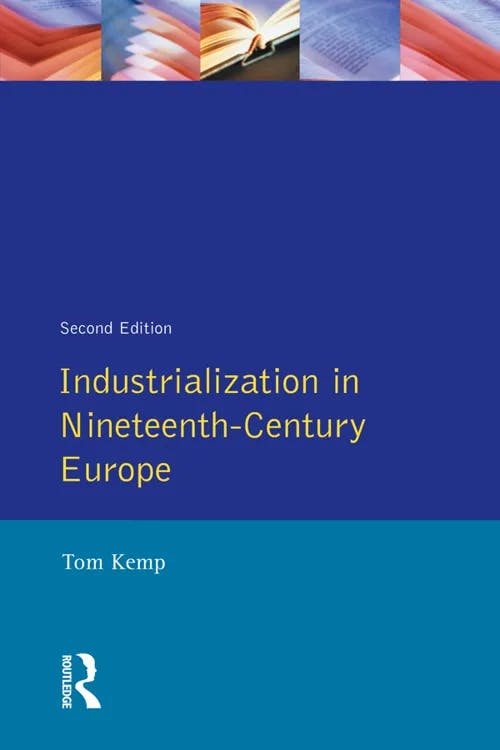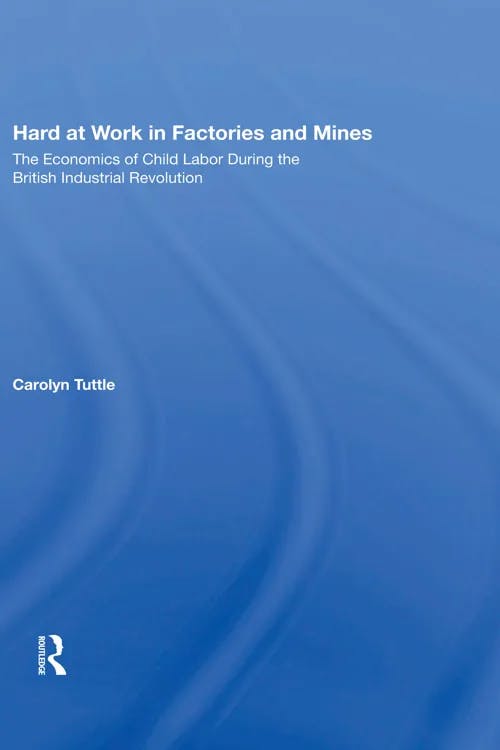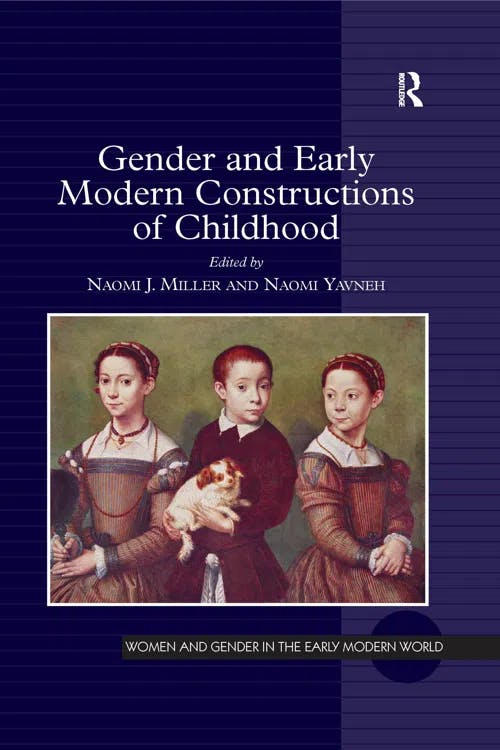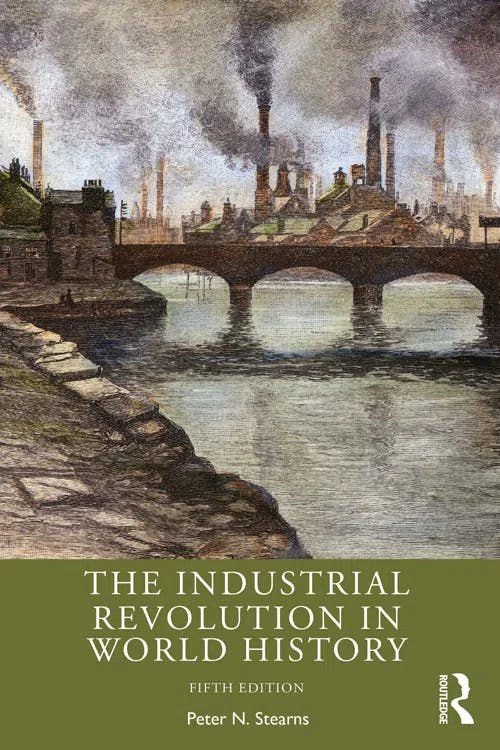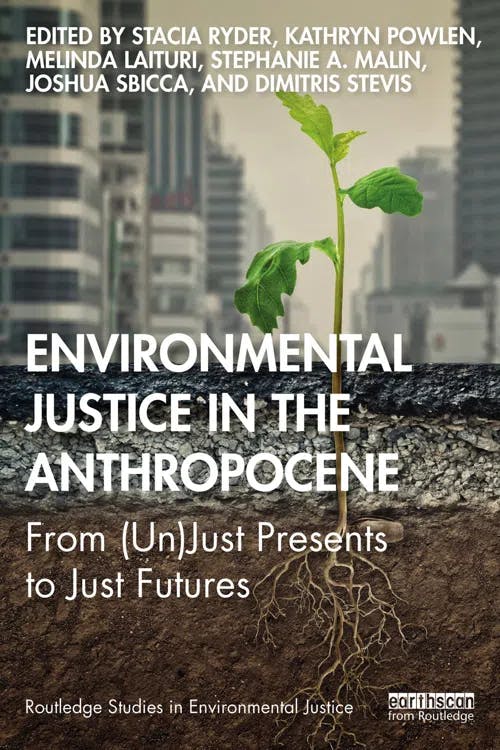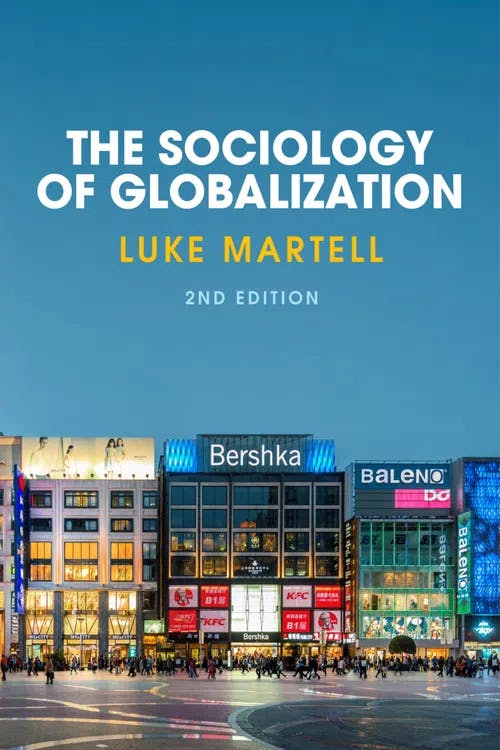What is Industrialization?
MA, Sociology (Freie Universität Berlin)
Date Published: 12.03.2024,
Last Updated: 05.04.2024
Share this article
Defining industrialization
Industrialization refers to the large-scale transition in modes of production within a given society from agrarian to industrial. This process is accompanied by the development of new technologies that rapidly increase the rate at which goods are manufactured. The effects of industrialization reach far beyond the economic sphere to have a transformative effect on society as a whole. As sociologist Herbert Blumer describes it in Industrialization as an Agent of Social Change,
As a new form of economy that is undergoing prodigious growth and spreading its domain, industrialization is perceived as a major agent of social transformation. [...] Let us mention only a few of the more important items of this array: the migration of people; the disintegration of rural villages; the growth of cities; the tearing down of authority systems and traditional leadership; [...] the disorganization of families and communities; the creation of urban problems, such as congestion, unhealthy living quarters, crime, delinquency, and individual demoralization; the formation of new class structures; [...] the development of new standards of living; [...] the introduction of industrial conflict; and the incitation to radical and revolutionary movements. (2018)
Herbert Blumer
As a new form of economy that is undergoing prodigious growth and spreading its domain, industrialization is perceived as a major agent of social transformation. [...] Let us mention only a few of the more important items of this array: the migration of people; the disintegration of rural villages; the growth of cities; the tearing down of authority systems and traditional leadership; [...] the disorganization of families and communities; the creation of urban problems, such as congestion, unhealthy living quarters, crime, delinquency, and individual demoralization; the formation of new class structures; [...] the development of new standards of living; [...] the introduction of industrial conflict; and the incitation to radical and revolutionary movements. (2018)
While the impacts of industrialization are complex and — in some ways — hotly contested, it is generally believed to be one of the most significant developments in human history.
Much of this guide will focus on industrialization as it initially came about during the Industrial Revolution, which began in the late 18th century and continued into the 19th. Following that, we will conclude with global and contemporary perspectives on industrialization.
The Industrial Revolution
The Industrial Revolution, also known as the First Industrial Revolution, refers to the transition of economies from agrarian to manufacturing. It originated in Britain, but also played a role in globalizing the world economy as raw materials were extracted from colonies in the global South for manufacturing in the global North. So while you may already be familiar with the inventions associated with the Industrial Revolution, it is crucial to recognize some of the other historical preconditions that paved the way for industrialization to take place. In particular, industrialization would not have been possible without imperialist exploits on faraway shores, the formation of market economies, and the violent dispossession of peasants from the lands where they lived. These developments allowed for market economies to expand and pick up pace.
Influx of merchant capital
Industrialization was preceded by the rise of an increasingly wealthy and territorially fluid mercantilist class, which made their riches through plunder in the so-called New World. Namely, these merchants and explorers brought back unprecedented amounts of gold and silver from the Americas, which had a huge impact on the economies and power structures of Europe. Specifically, the scale of these merchants’ wealth threatened the feudal order of things, as society was hitherto governed by lords and vassals whose claims to power largely came from their landholdings. As Karl Marx argues in Das Kapital,
The discovery of gold and silver in America, the extirpation, enslavement and entombment in mines of the aboriginal population, the beginning of the conquest and looting of the East Indies, the turning of Africa into a warren for the commercial hunting of black-skins, signalised the rosy dawn of the era of capitalist production. (in Collected Works of Karl Marx and Friedrich Engels, 1867, [2021])
Karl Mar and Friedrich Engels
The discovery of gold and silver in America, the extirpation, enslavement and entombment in mines of the aboriginal population, the beginning of the conquest and looting of the East Indies, the turning of Africa into a warren for the commercial hunting of black-skins, signalised the rosy dawn of the era of capitalist production. (in Collected Works of Karl Marx and Friedrich Engels, 1867, [2021])
Merchants needed to invest their newfound wealth, and this provided the startup capital for investing in early factories, industrial innovations, and so on. This influx of money also gave rise to the passage of several state-sanctioned laws, decrees, and regulations that lay the foundation for early market economies and the private sector. In order not to become obsolete, the landed gentry also sought to convert their land-derived wealth into these early forms of liquid assets and began to sell their land for bonds.
Primitive accumulation
It should also be noted that this transition was not a smooth and straightforward one simply driven by the merchants’ fortunes. It was considered one of the bloodiest periods in European history — marked by the violent suppression of peasant revolts, forced dispossession, and sequestration of all those who resisted.
All of this culminated in a process known as primitive accumulation where land and labor were secured for industrialization to take place. As Marx vividly describes it in Das Kapital,
capital comes dripping from head to foot, from every pore, with blood and dirt. [...] Thus were the agricultural people, first forcibly expropriated from the soil, driven from their homes, turned into vagabonds, and then whipped, branded, tortured by laws grotesquely terrible, into the discipline necessary for the wage system. (1867, [2021])
Through laws such as the Enclosure Acts (1604–1914), common lands were closed off and many peasants were ultimately forced into cities, as they could no longer subsist as farmers:
The expropriation and eviction of a part of the agricultural population not only set free for industrial capital the workers, their means of subsistence and the materials of their labour; it also created the home market. In fact, the events that transformed the small peasants into wage labourers, and their means of subsistence and of labour into material [sachliche] elements of capital, created, at the same time, a home market for capital. (Marx, 1867, [2021])
Thus, land was freed for the construction of factories and legions of wage-dependent workers were now available for the factories. In turn, these workers were also made into consumers who now relied on the market to buy the commodities they needed to live.
Technological advancements
The technological advancements that made the Industrial Revolution possible had a significant impact on life as people knew it. These innovations, including things like the spinning jenny and flying shuttle, were in many cases invented by the ingenuity of workers and artisans who were looking to make their lives easier or to increase the rate at which they could produce goods. That said, these new tools were then incorporated into early factory production to meet market demands. As Tom Kemp argues in Industrialization in Nineteenth-Century Europe,
the application of the mechanical inventions and their ability to transform the economy and to contribute to economic growth depended on the existence of opportunities which grew out of a still wider system of change. (2014)
Tom Kemp
the application of the mechanical inventions and their ability to transform the economy and to contribute to economic growth depended on the existence of opportunities which grew out of a still wider system of change. (2014)
Within the context of new demands for consumer goods, often fueled by imperial expansion, inventions were instrumental in making the process of industrialization possible. They opened up entirely new industries and have significantly altered life as we know it. Let’s take a look at a few of the most impactful ones associated with the Industrial Revolution.
Textiles
In agriculture, there were new inventions that exponentially increased productivity so that far fewer people were required to produce staple goods. Perhaps the most significant had to do with the processing of cotton into thread and then into textiles. This was aided by machines like the spinning jenny in 1764–5, which enabled multiple threads of cotton to be spun at once rather than individually on a traditional spinning wheel.
Before the Industrial Revolution, production was organized at a small-scale level within what are known as cottage industries. With the implementation of the aforementioned inventions, home production of goods such as textiles became the sites of early factories. In addition, it should be noted that American slavery, aided by tools like the cotton gin in 1793 — which made it easier to separate cotton fibers and seeds — significantly contributed to making cotton processing at an industrial scale possible.
Steam engine and mechanization
The development of the steam engine in 1712 also opened up new horizons for industrial production. Cotton processing mills, for instance, could now be powered by steam rather than machines operated solely by people or livestock. This also laid the foundations for the coal mining industry, as the steam engine was powered by coal.
Moreover, other elements of mechanization — such as the incorporation of pulleys, belts, and shafts — gave rise to the invention of other large industrial machinery. Together the steam engine and other advancements in mechanization also gave rise to new forms of transportation.
Transportation and telecommunications
Ships and locomotives came on the scene in the early 19th century, which utilized the aforementioned technological advancements to transport large amounts of cargo at unprecedentedly rapid speed. Combined with the invention of communication technology, such as the telegraph in 1837, the world became more interconnected than ever before — as people as well as goods could now travel with ease. Industrialization, therefore, had a significant impact on the pace of modern life, including our very perceptions of time and space.
(You can learn more about this in our study guide on time-space compression.)
Impacts of industrialization on society
Industrialization brought about major changes to the world. It effectively reshaped almost every arena of life and pushed society further into the modern age. New modes of industrial production changed the structures and distribution of power, propagated new urban realities, impacted living standards, and had a huge effect on the natural environment. In the following sections, we’ll examine the results of industrialization on society in more depth, beginning with the Industrial Revolution.
The rise of capitalism
Industrialization in Europe culminated in the institutionalization of capitalism, which distinguished societies on the continent from their feudal past. This had implications beyond the economic sphere and new technological advancements that came on the scene at the time. Capitalism changed how people met their needs by making them reliant on wages used to purchase commodities on the market — rather than producing these items themselves. This fact fundamentally altered social relations by producing new forms of social stratification, ranging from class down to how families were organized. In fact, to varying degrees, the propagation of class society and changes in family structure are common byproducts of industrialization in contexts around the world.
Class
One of the distinguishing features of capitalism is that it divides people into two classes: capitalists and workers. Industrialization gave rise to industrialists who owned the means of production and hired workers to operate their factories. Workers, on the other hand, were those dispossessed from their lands and, therefore, forced to sell their labor power. Many became employed in textile manufacturing, coal mining, and steel mills — all of which were known for their grueling hours and dangerous conditions.
In turn, this new form of social stratification also gave rise to class consciousness as workers began to understand themselves as the proletariat who, while exploited by the capitalists, became powerful in solidarity with other workers who could collectively bargain to improve their working conditions. Over the course of the 19th century and into the 20th, there was much upheaval as political ideologies like socialism and communism became widespread among factory workers. It was in this context that The Communist Manifesto spread widely with its famous message,
Let the ruling classes tremble at a Communistic revolution. The proletarians have nothing to lose but their chains. They have a world to win. WORKING MEN OF ALL COUNTRIES, UNITE! (Karl Marx and Friedrich Engels, 1848, [2014])
Karl Marx and Friedrich Engels
Let the ruling classes tremble at a Communistic revolution. The proletarians have nothing to lose but their chains. They have a world to win. WORKING MEN OF ALL COUNTRIES, UNITE! (Karl Marx and Friedrich Engels, 1848, [2014])
Industrialists often violently quelled the unrest with the help of hired guards and the police. These struggles between capitalists and workers, born out of industrialization, would continue to shape much of 19th and 20th-century history.
Gender and family
The transition to capitalism brought about by industrialization had a considerable effect on gender dynamics and family structure. In pre-industrial, agrarian societies it was advantageous to have as many children as possible because they served as valuable farm hands. During industrialization, on the other hand, there was less of a need for children and the cost of raising them became higher for wage-dependent households.
Moreover, as historians like Silvia Federici argue, “the commercialization of land and the rise of monetary relations affected women and men differently” (Witches, Witch-hunting, and Women, 2018). For one, women’s wages often went directly to their husbands and the Enclosure Acts made it increasingly difficult for them to survive outside of the nuclear family structure. As the middle class emerged — made of workers like doctors, lawyers, and managers — so did the idea of the nuclear family where women were relegated to the home or domestic sphere. Middle-class women served the role of providing a nice place of rest for the male breadwinner to retreat to from the demands of wage labor and modern life.
Furthermore, during this period of industrialization, capitalists often favored feminine and child labor because these groups were smaller and considered to be more nimble and docile. Plus, it was acceptable to pay them less than their adult male counterparts. These jobs were extremely unsafe, and as Carolyn Tuttle reports in Hard at Work in Factories and Mines,
[Factory] overlookers confessed to hitting children to wake them, young workers mentioned getting fined and beaten for falling asleep and medical officers reported accidents and injuries which resulted from children getting sucked into machinery. (2021)
Carolyn Tuttle
[Factory] overlookers confessed to hitting children to wake them, young workers mentioned getting fined and beaten for falling asleep and medical officers reported accidents and injuries which resulted from children getting sucked into machinery. (2021)
Thus, injuries and deaths resulting from exhaustion and dangerous machinery were common during this time.
Ironically, it was also out of this era that the modern notion of “childhood” emerged, as distinct from viewing children as small adults, more well-off families shielded their children from life as wage-earners in the factory. As Naomi J. Miller and Naomi Yavneh argue in Gender and Early Modern Constructions of Childhood,
“childhood” was not a privileged or even specified developmental period until the modern era. [...] affective intimacy was an outgrowth of the development of the middle class nuclear family in the late seventeenth and eighteenth centuries, and did not spread either to the aristocracy or the working classes before the nineteenth century. (2016)
Edited by Naomi J. Miller and Naomi Yavneh
“childhood” was not a privileged or even specified developmental period until the modern era. [...] affective intimacy was an outgrowth of the development of the middle class nuclear family in the late seventeenth and eighteenth centuries, and did not spread either to the aristocracy or the working classes before the nineteenth century. (2016)
Urbanization
Industrialization was also marked by rapid processes of urbanization as people flocked to cities in search of work after being dispossessed from their lands. With this came the rise of a new way of life and culture in the urban environment. As people gathered in closer proximity, social life took on a different form — in both positive and negative ways. On one hand, rapid urbanization due to industrialization has resulted in the formation of slums marked by abject poverty and dangerous living conditions. On the other hand, urbanization offered the possibility for municipal organization of people and opportunity for exchange — as seen in the formation of working-class sports clubs and cafe culture in 19th-century Europe — which were essential to building solidarity and generating new ideas.
Urban art and culture
City life had a significant impact on culture including art, literature, and cinema as people tried to capture the new pace of life and cultivated new subjectivities associated with their urban reality. This is exemplified by the emergence of modernism. An umbrella name for a variety of different avant-garde sub-movements, the modernists were united by their desire to capture the dynamism and mechanization of modern industrialized societies. The work of Italian Futurists, for instance, featured motifs of automobiles, speed, brashness, and loud noise. Early cinema, too, such as Fritz Lang’s Metropolis (1927), offers another example of the ways in which the urban environment produced new sources of inspiration in a flourishing cultural scene (see Thomas Elsaesser, Metropolis, 2019).
Changing subjectivities in the urban environment
As George Simmel writes in “The Metropolis and Mental Life” (1903), the fast-paced and overstimulating life of the city also altered the very mindset and subjectivity of people residing there,
To the extent that the metropolis creates these psychological conditions—with every crossing of the street, with the tempo and multiplicity of economic, occupational and social life—it creates in the sensory foundations of mental life, and in the degree of awareness necessitated by our organization as creatures dependent on differences, a deep contrast with the slower, more habitual, more smoothly flowing rhythm of the sensory-mental phase of small town and rural existence. (in The People, Place, and Space Reader, 2014)
Edited by Jen Jack Gieseking et al.
To the extent that the metropolis creates these psychological conditions—with every crossing of the street, with the tempo and multiplicity of economic, occupational and social life—it creates in the sensory foundations of mental life, and in the degree of awareness necessitated by our organization as creatures dependent on differences, a deep contrast with the slower, more habitual, more smoothly flowing rhythm of the sensory-mental phase of small town and rural existence. (in The People, Place, and Space Reader, 2014)
Sociologists like Simmel have extensively studied these impacts of urban life on people, arguing that it bred new forms of social anomie (the breakdown of social norms and morals), crime, and other types of deviant behavior. They attribute these conditions to the alienation of life under capitalism and the anonymity of large cities.
(You can explore more about the effects of city life on the human condition in our study guide on urban sociology.)
Changes in standard of living
It is contested whether overall changes in living standards have been net positive or negative as a result of industrialization. Contemporarily, it is something that is debated by researchers and historians. Peter N. Stearns highlights some of these nuances and tensions in The Industrial Revolution in World History,
Increased output could and often would be used in various ways: to increase inequality in the standard of living, to support higher tax revenues, to provide for rapidly growing populations, or to change and possibly improve material conditions for the masses. These varied results and the balance among them form vital topics to explore in dealing with the impact of industrialization on individuals and societies. (2020)
Edited by Peter N. Stearns
Increased output could and often would be used in various ways: to increase inequality in the standard of living, to support higher tax revenues, to provide for rapidly growing populations, or to change and possibly improve material conditions for the masses. These varied results and the balance among them form vital topics to explore in dealing with the impact of industrialization on individuals and societies. (2020)
In terms of these varied results, industrialization is associated with longer life expectancy, better infrastructure and amenities, and increased access to consumer goods. However, the process of industrialization itself usually comes with dangerous working conditions — including child labor in parts of the world — and rapid urbanization, which results in the rise of slums and the crowding of cities. While industrialization also holds the possibility of reducing poverty levels and providing more opportunities for education and employment, it has been linked to the breakdown of social cohesion and the rise of inequality in the long run.
Environmental degradation
Mental images of industrializing cities such as London in the 19th century might conjure images of smog, overcrowding, and locomotives belching large clouds of black smoke. Indeed, these were as much the byproducts of the Industrial Revolution as were new technological developments or urbanization. That said, to really understand the full, cumulative effects of industrialization on the environment we’d have to fast forward to the present. As Nino Antadze describes it in Environmental Justice in the Anthropocene,
The overconsumption of resources, the ways we have altered the earth’s surface in the form of megacities and industrialized agricultural systems, the chemicals and biological changes we have introduced onto the earth [...] all mark significant environmental impacts brought on by human systems [...] Some perspectives identify the beginning of the Industrial Revolution as this geologic marker, when industrializing societies began to emit and rely on fossil fuels [...] (2021)
Edited by Stacia Ryder et al.
The overconsumption of resources, the ways we have altered the earth’s surface in the form of megacities and industrialized agricultural systems, the chemicals and biological changes we have introduced onto the earth [...] all mark significant environmental impacts brought on by human systems [...] Some perspectives identify the beginning of the Industrial Revolution as this geologic marker, when industrializing societies began to emit and rely on fossil fuels [...] (2021)
Thus, industrialization is considered to be linked to climate change. Moreover, numerous industrial accidents such as oil spills, sinkholes created by over-extraction of minerals, contamination of water supplies due to chemical waste runoff, and an increase in greenhouse gas emissions have significantly impacted biodiversity and contributed to rising temperatures. (To discover more about the impact of human activities on the natural environment, read our study guide on the Anthropocene.)
While these issues certainly take place in the global North, the global South has often paid the price for the wealthy nations’ processes of industrialization. As Luke Martell writes in The Sociology of Globalization,
The rich expect poorer countries that are more recent producers of significant carbon emissions to restrict their emissions. However, poorer states that have not industrialized so far or so early feel this is an unjust imposition. Most of the problems were caused by richer countries that never had to put in place such restrictions, which curb possibilities for growth and higher standards of living or make these more expensive. (2016)
Luke Martell
The rich expect poorer countries that are more recent producers of significant carbon emissions to restrict their emissions. However, poorer states that have not industrialized so far or so early feel this is an unjust imposition. Most of the problems were caused by richer countries that never had to put in place such restrictions, which curb possibilities for growth and higher standards of living or make these more expensive. (2016)
We will explore some of the asymmetrical dynamics and double standards between global North and global South when it comes to industrialization in the following sections.
Global perspectives on industrialization
While we have used the Industrial Revolution of Europe as an example for understanding industrialization, it should be noted that this process has taken place in varied ways throughout the world. It is also essential not to fall into the trap of seeing societies that have industrialized later as being “behind” Europe and North America, as the reality and interrelatedness of these contexts are more complex than can be encapsulated in a simple description of industrialization as a linear temporal process.
In the next sections, we will look at how colonialism in the global South enabled industrialization in the global North.
Imperialism and colonialism
Imperialism and colonialism were instrumental for industrialization in Europe for several reasons. For one, vast amounts of natural resources were required as raw material inputs for factories, ranging from cotton to coal, iron, timber, and sugar. In addition to extracting these products from colonies, consumer markets were needed to sell an ever increasing quantity of manufactured goods. As Stearns explains,
[...] the power position of the West, combined with increased attempts to exploit other parts of the world, undercut effective reactions. Industrialization gave Western governments and businessmen new ability to exploit the rest of the world, and they responded greedily. Their factories undercut local industries. Their companies pressed for greater access to resources and food exports, providing rewards for a few local intermediaries but pressing more and more workers into low-wage sectors. Western banks encouraged foreign governments to take out loans, crippling their independence. (2020)
Thus, this process happened in a calculated way that kept colonies dependent on their colonizers whilst simultaneously being exploited by them. Numerous scholars and writers — such as Eduardo Galeano in Open Veins of Latin America (1997) and Immanuel Wallerstein in World-Systems Analysis (2004) — argue that these same dynamics persist today as wealth and natural resources continue to flow from global peripheries in the South to imperial cores in the North.
(You can also read additional explanations about these dynamics in our study guides on world-systems theory and neocolonialism.)
Industrialization in the global South
In the globalized world, much of the global South has now undergone processes of industrialization to varying degrees. Emergent economies in the BRICS countries — Brazil, Russia, India, China, and South Africa — in particular, have made great strides in this arena. Rapid urbanization as the result of industrialization has also led to major demographic changes in numerous countries around the world, giving rise to megacities such as Delhi, São Paulo, Dhaka, and Mexico City, which are also marked by the formation of slums and urban sprawl.
When assessing the overall effects of industrialization in these more contemporary examples the results are equally mixed as in the cast of the Industrial Revolution. or example, conventional development approaches often suggest that encouraging industrialization will help close the poverty gap between wealthy and poorer nations, raise the standard of living and life expectancy, and result in better infrastructure, and higher GDP overall. The United Nations tends to take this view, as encapsulated by its human development index. As Martell states,
The UN say that since 1990 there has been improvement in areas with a low HDI but that this is slowing down. More than 2.2 billion people are either near to or living in multidimensional poverty; of these, 1.5 billion are in poverty [...] Many improvements in poverty are uneven. The biggest changes are in developing Asia and especially the very populous China. (2016)
Thus, industrialization in some countries, such as China, has seen positive results in raising living standards via extensive efforts to industrialize. Still, the picture remains complex, particularly when you factor in things like environmental degradation or the long-term impacts of structural inequality associated with industrialized societies.
In addition, much of the industry in the global South is still controlled and exploited by firms and companies in the global North. Of this Martell writes,
Help for developing countries from the Group of Eight (G8) highly industrialized countries is conditional on liberalization and democratization ... [and] on issues such as debt and aid. (2016)
In other words, to receive aid in the development of their industrial capacities, countries must submit to the sphere of influence of nations in the global North through debt schemes under the International Monetary Fund (IMF) and via loans from the World Bank, to name a couple of examples. Thus, in many cases, there is still an asymmetry of power between the post-industrial societies of the global North and those formerly colonized nations of the global South.
Closing thoughts
In sum, the topic of industrialization is vast and complex. Outcomes can vary depending on the time and context in which this process takes place, meaning it is important not to take a deterministic view of how it will change a given society.
New challenges have also emerged in the present moment as we face the crisis of climate change, which can largely be attributed to our industrial way of life. Moreover, as societies deindustrialize through processes of outsourcing and automation, they also face new uncertainties. These include job loss, urban decay, social dislocation, and poverty. Therefore, it remains to be seen whether the benefits of industrialization outweigh the costs in the long term. There’s no doubt, however, that the legacy of industrialization is far-reaching, as prominent sociologists such as Herbert Blumer remind us that it was one of the most significant developments in shaping human society and history (2018).
Further reading on Perlego
The First Age of Industrial Globalization: An International History 1815-1918 (2019) by Maartje Abbenhuis and Gordon Morrell
Dark Matters: On the Surveillance of Blackness (2015) by Simone Browne
Patriarchy of the Wage: Notes on Marx, Gender, and Feminism (2021) by Silvia Federici
The Nation-State and Violence (2013) by Anthony Giddens
Industrialization and Development: An Introduction (2023) by Ray Kiely
What is industrialization in simple terms?
What is an example of industrialization?
Who are some scholars associated with the topic of industrialization?
Bibliography
Antadze, N. (2021) “The Selective Invisibility of Oil and Climate Injustice in the Anthropocene and Beyond” in Ryder, S. et al (eds.) Environmental Justice in the Anthropocene: From Unjust Presents to Just Futures. Routledge. Available at: https://www.perlego.com/book/2489558/environmental-justice-in-the-anthropocene-from-unjust-presents-to-just-futures-pdf
Blumer, H. (2018) Industrialization as an Agent of Social Change: A Critical Analysis. Routledge. Available at: https://www.perlego.com/book/1545069/industrialization-as-an-agent-of-social-change-a-critical-analysis-pdf
Elsaesser, T. (2019) Metropolis. British Film Institute. Available at: https://www.perlego.com/book/1690801/metropolis-pdf
Federici, S. (2018) Witches, Witch-Hunting, and Women. PM Press. Available at: https://www.perlego.com/book/2585050/witches-witchhunting-and-women-pdf
Galeano, E. (1997) Open Veins of Latin America: Five Centuries of the Pillage of a Continent. Monthly Review Press. Available at: https://www.perlego.com/book/721072/open-veins-of-latin-america-five-centuries-of-the-pillage-of-a-continent-pdf
Kemp, T. (2014) Industrialization in Nineteenth Century Europe. Routledge. Available at: https://www.perlego.com/book/1554928/industrialization-in-nineteenth-century-europe-pdf
Marx, K. (2021) "Das Kapital," in Collected Works of Karl Marx and Friedrich Engels. Illustrated. Available at:
Marx, K. and Engels F. (2014) The Communist Manifesto. HarperTorch. Available at: https://www.perlego.com/book/602671/the-communist-manifesto-pdf
Martell, L. (2016) Sociology of Globalization. Polity. Available at: https://www.perlego.com/book/1536101/the-sociology-of-globalization-pdf
Miller, N.J. and Yavneh, N. (2016) Gender and Early Modern Constructions of Childhood. Routledge. Available at: https://www.perlego.com/book/1630554/gender-and-early-modern-constructions-of-childhood-pdf
Perelman, M. (2000) The Invention of Capitalism: Classical Political Economy and the Secret History of Primitive Accumulation. Duke University Press Books. Available at: https://www.perlego.com/book/1467121/the-invention-of-capitalism-classical-political-economy-and-the-secret-history-of-primitive-accumulation-pdf
Simmel, G. (2014) “Metropolis and Mental Life” in Gieseking, J. J. et al (eds.) The People, Place, and Space Reader. Routledge. Available at:
https://www.perlego.com/book/1545507/the-people-place-and-space-reader-pdf
Stearns, P.N. (2020) The Industrial Revolution in World History. Routledge. Available at: https://www.perlego.com/book/1974346/the-industrial-revolution-in-world-history-pdf
Tuttle, C. (2021) Hard At Work In Factories And Mines: The Economics Of Child Labor During The British Industrial Revolution. Routledge. Available at: https://www.perlego.com/book/2995484/hard-at-work-in-factories-and-mines-the-economics-of-child-labor-during-the-british-industrial-revolution-pdf
Wallerstein, I. (2004) World-Systems Analysis: An Introduction. Duke University Press Books. Available at: https://www.perlego.com/book/1465746/worldsystems-analysis-an-introduction-pdf
Filmography
Metropolis (1927) Directed by Fritz Lang.
MA, Sociology (Freie Universität Berlin)
Lily Cichanowicz has a master's degree in Sociology from Freie Universität Berlin and a dual bachelor's degree from Cornell University in Sociology and International Development. Her research interests include political economy, labor, and social movements. Her master's thesis focused on the labor shortages in the food service industry following the Covid-19 pandemic.



